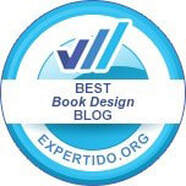|
Your book is complete... but is it?
Now that you have finished your first draft, you’ll want to go back and edit what you’ve written, and at first this can seem like an overwhelming and very daunting task. This is where procrastination can set it, ‘I’ll do it next week…….’ many will say, and the book sits in a file on your laptop, its launch date creeping further and further away. But it shouldn’t be this way, fine tuning your manuscript is vital if you want to succeed, many authors will use the services of a professional editor (we even know authors who use multiple editors in order to polish their book prior to launch), the main thing is that your manuscript should be edited once you have stopped writing.
0 Comments
Writing a blurb for a book of fiction is something that can take you days or even weeks to fine tune, it will become a selling point for your book and as such it’s vital to get right, but there is a fine line between what you should add and what you should leave out.
You also need to consider the length of the text, how much should you write? It’s tempting to try to say as much as you possibly can, but this can lead to a blurb which is close to 400 words and ends up never being read by those browsing for their next paperback. So, here are our top tips on what you should consider when writing a blurb for your book (fiction): Your book cover design will become the face of your work and as such will always play a very important role, it gives the viewer an immediate idea as to the contents and whether or not they’re going to look any further.
So, understanding this purpose (more than it just looking pretty) is important to you as an author, if you want your book to be taken seriously and ultimately sell, then you need to understand that its advertising, presentation and design will need to be both professional and able to compete within the market. Most serious authors get this, knowing that their competition is vast and full of big name publishing houses (as well as indie authors) leads them to adopt a professional approach to the launch of their publication. There are close to 2,000 books published every day in the US alone, so without a focused plan you may find it challenging to get people to see your new book. Now that you have your book cover completed, the formatting done and all edits finalized, your book should be looking great and ready to publish, but have you thought about your brand as an indie author?
You may be thinking ‘well, that’s for the big sellers who have a large publishing house behind them, right?’ Not really, it is true that most big name authors will normally have a large advertising budget to spend, and they will have a ‘brand/style/image’ which is consistent across every platform they’re represented upon, but this is not something that’s exclusive to those within the best sellers lists. |
JD&JCategories
All
Archives
March 2024
All information within this website (including its blog) is published in good faith and for general information purposes only. JD&J Design LLC does not make any warranties about the reliability and accuracy of this information. Any action you take upon the information in this website is strictly at your own risk. JD&J Design LLC is not liable for any losses and/or damages in connection with the use of this site and information.
|
Services |
Support |







